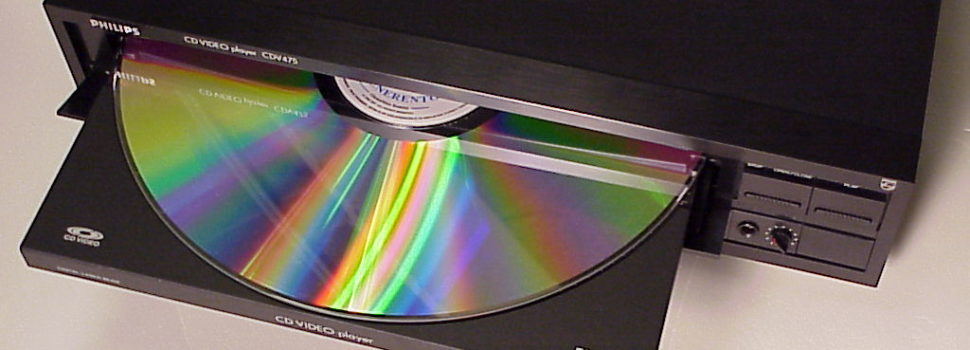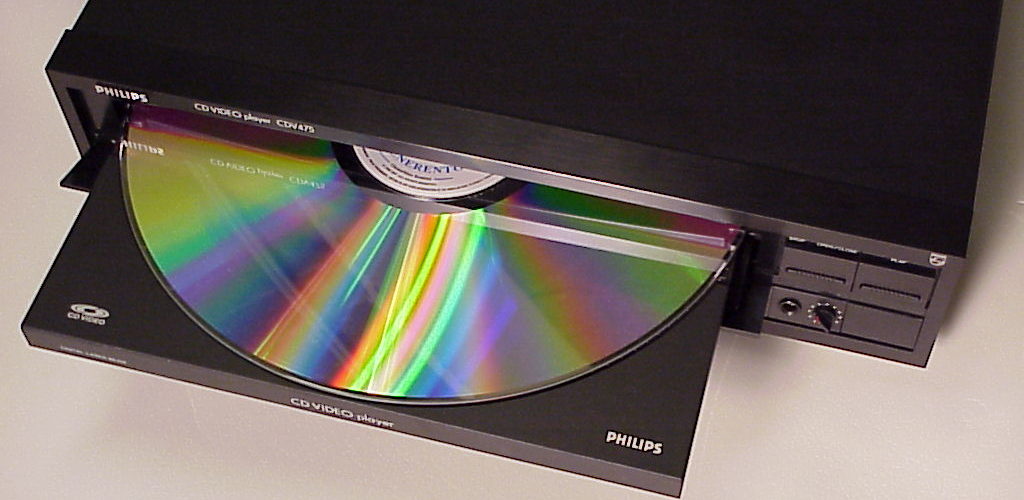


I like to take a look at where I’ve been to evaluate where Im going. Technology is cyclical after all… wait no its not. That said I still like all the feels that come rushing back like a flood of nostalgia every time I get my hand on the tech I grew up with. I’m going to go back periodically and take a looking at the stuff that used to blow our hair back and get our minds rolling. Some of these device blew up and changed the world, some where ahead of their time and some just fell flat and became colossal failures. Today’s throwback is a failure and a bomb, but has one redeeming quality that makes it invaluable.. Today we are talking about the LaserDisc
LaserDisc History
LaserDisc (originally a trademarked term invented by Pioneer Electronics) is an optical recording medium primarily used for video recordings. In fact it was the first optical recording device to be made publicly available. The technology first began development in the late 50’s; however, it didn’t debut until 1978. The disc resembled a Compact Disc the size of a vinyl record album. The similar appearance is because it was a precursor to CD.
The format originally didn’t have a proper name. It was called many different things, but was first marketed as MCA DiscoVision (or simply “DiscoVision”), with MCAnote and Dutch electronics company Philips having significantly contributed to the development of the format. Moreover, Jaws was the first movie to be released on it. In 1980, Pioneer Electronics bought out the rights and patents to the format, and subsequently renamed it “LaserVision”, with the format introduced in Japan in 1981. Although they would later use “LaserDisc”note as a brand name, LaserVision was the official name of the format until the early 1990s, when Pioneer finally began to use “LaserDisc” as the format’s official name.
The Resolution Quality
With the exception of DVD, Laserdiscs are by far the best-looking and sounding home video system available. Pioneer pitches LD as “60% sharper” than VHS. LD image quality is roughly comparable to standard 16mm film, VHS is roughly comparable to 8mm film.Depending on source material and the transfer to disc, LD is above live TV broadcast quality. For NTSC, this is 425 TVL (luminance lines horizontally for 3/4 of the screen width) and about 482 scan lines, compared to 330×482 for broadcast.
LaserDisc gave way to letterbox. When LaserDisc came to market, people, for the first time, could watch theatrical movies in their homes. Some intelligent producers actually thought that some people would perhaps enjoy actually seeing the whole film. As a result, letterboxing was developed to mat the picture with black bars on the top and bottom. Enabling the wide center area to show the aspect ratio of the original theatrical presentation. Prior to this everything was presented in Pan and Scan mode whereby the wide version of the film was intelligently cropped to where the action was – but still eliminating 30% or more of the picture.
Star Wars on LaserDisc
This is LaserDisc’s immortal contribution to humanity, film and society. LaserDiscs digital resolution was far superior to what was available in the late 70s and 80s. This made it the perfect platform to watch the most epic space saga to date. This tech was ahead of its time and prime for Star Wars fans. Most definitely the best way to watch Star Wars out side the cinema theaters. Great right? It is, but ends up being legendary. The Original trilogy is released in high quality LaserDisc in 1986. As the tech fades to the DVD smaller format just about the same time George Lucas sets his remasters to work. We know of the horrors that became of the re-release…. Han shot first!… As I digress, only the Remastered versions make it to DVD. Thus ensuring the original masterpieces are forever forgotten to the approaching digital DVD revolution.
However, LaserDisc saves the day. Nerds unit and covet the LaserDisc copies. Later converting them to a higher resolution digital copy that will circulate through the internet and ensuring the glory days of Star Wars..











No comments so far.
Be first to leave comment below.